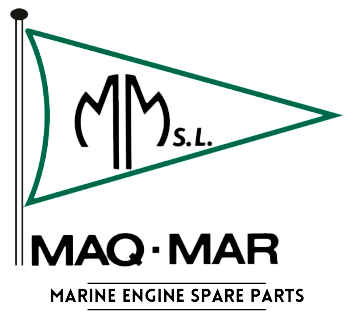MSC World Europe will become the first cruise to incorporate the new solid oxide fuel cell (SOFC) technology powered by liquefied natural gas (LNG). Specifically, this technology has been developed by MSC Cruises, Chantiers de l’Atlantique and Bloom Energy.
This new flagship, with 40,000 m2 of common spaces, is the first of the innovative World Class prototype. On one hand, it will have 22 decks, 47 meters wide and 2,626 cabins. On the other hand, it will feature the best innovations in reducing gas emissions, noise and energy efficiency using alternative energies, as well as an innovative wastewater treatment system.
MSC World Europe: Innovative engines and fuels
- 5 Wärtsilä 14V 46DF dual-fuel engines, which normally run on liquefied natural gas (LNG) and occasionally on low-sulfur marine gas oil (MGO)
- 150 kW solid oxide fuel cell
In fact, at Máquinas Marinas MAQMAR you can find Wärtsilä diesel engines such as the 22/ VASA22, 32/VASA32, 36 y 46.
The fuel on which the cruise will operate, liquefied natural gas (LNG), is one of the world’s cleanest marine fuels currently available. Thus, it will contribute to the decarbonization – or transition to zero emissions – of international shipping. In other words, LNG eliminates emissions of air pollutants such as sulfur oxides almost entirely and reduces nitrogen oxides (NOx) by up to 85%. It also eliminates fine particulate matter and achieves a carbon dioxide (CO2) reduction of up to 25%. Indeed, this energy will enable the development of low-carbon fuels and solutions such as green hydrogen, biomethane and fuel cells.
In fact, a fuel cell will be on display on the ship to demonstrate the efficiency of this technology as a means of producing energy, with 30% more efficiency than LNG engines. Basically, solid oxide fuel cells (SOFCs) are one of the most successful renewable energy technologies for reducing CO2, sulfur and nitrogen emissions. However, it is necessary to place the cells in a battery in such a way that they generate more energy.
Nitrogen oxides (NOx) emissions
What’s more, the MSC World Europe cruise features a selective catalytic reduction (SCR) system that reduces NOx emissions by 90% when LNG is not available and the ship must run on marine diesel fuel. As LNG fuel achieves a similar reduction, the cruise ship will always meet International Maritime Organization (IMO) Tier III emissions standards.
In addition, ship-to-shore electrical connectivity will allow switching and minimizing engine use in ports where the necessary infrastructure is available.
Wastewater treatment
Moreover, the cruise ship has advanced sewage treatment systems to comply with the Baltic standard – MEPC Resolution 227(64) – which is the strictest global standard for sewage disposal at sea.
Besides, it has a ballast water treatment system with UV treatment to prevent the introduction of invasive species into the marine environment through ballast water discharges. Thus, IMO’s Ballast Water Management Convention is fulfilled.
Respectful with marine fauna
In addition, MSC World Europe’s hull and engine room have been designed with an underwater noise management system to minimize the impact of acoustic sound underwater. This leads to significant noise and vibration reduction for marine mammals.
The most sustainable cruise
All in all, MSC World Europe will become the most sustainable and efficient ship in MSC Cruises’ fleet to date, to be delivered in October 2022.
MSC Cruises has three orders for LNG-powered ships until 2025 belonging to the World Class, with a total investment of more than 3 billion euros. MSC World Europe will be followed by MSC Euribia, which is under construction in Saint Nazaire (France) and will be ready to sail in 2023. Finally, construction of the third ship will begin in early 2023.


Recent Comments